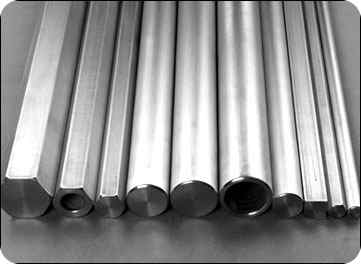The use of stainless steels for plastics PET preform molds making has grown steadily in the past few years. The primary purpose of using stainless steelfor molds is to avoid corrosion from the plastics material itself, or from condensing water vapor on a cold mold, or from dropping water coming from a leaky steam pipe. Some types of stainless steels may be obtained with the high hardness which is preferred by many mold maker, and high tensile strength is inherent in some alloys. Long wearing qualities and resistance to abrasion are other factors which contribute to the desirability of using stainless steels for molds.
 Another consideration which seems favorable to some molders is the possible advantage of stainless steel over chromium plated steel mold cavities. The corrosion and wear resistance achieved by using solid stainless steel, or by using chromium plated tool steel may be approximately equal, but the plating, for example cannot be thrown into a sharp corner very satisfactorily under some conditions. Also, reworking a plated part often requires stripping the plate, reworking, and then replating. The case of solid corrosion resistant metal against corrosion resistance acquired by plating is subject to much controversy. Both methods of achieving corrosion resistance have their proper fields of application, though it is often difficult to make out a clear case for one or the other. Then experience and good judgment must be employed, and mere opinions must be examined carefully for their real value.
Another consideration which seems favorable to some molders is the possible advantage of stainless steel over chromium plated steel mold cavities. The corrosion and wear resistance achieved by using solid stainless steel, or by using chromium plated tool steel may be approximately equal, but the plating, for example cannot be thrown into a sharp corner very satisfactorily under some conditions. Also, reworking a plated part often requires stripping the plate, reworking, and then replating. The case of solid corrosion resistant metal against corrosion resistance acquired by plating is subject to much controversy. Both methods of achieving corrosion resistance have their proper fields of application, though it is often difficult to make out a clear case for one or the other. Then experience and good judgment must be employed, and mere opinions must be examined carefully for their real value.
In some cases, the free machining grades of stainless steels which contain sulfur or selenium have been found to be unsatisfactory. Thus the stainless steels •which are offered for mold use are generally more difficult to machine than are the tool steels and alloy mold steels. Some stainless steels are supplied in the pre-hardened state, for best accuracy of the finished mold part. Others are supplied in annealed condition and may be hardened after machining, with some attendant distortion.
Stainless mold steels are specialty steels. They are not used as extensively as are the more familiar and common steels, and they should not be stocked ordinarily in the plastic mold companies. Close cooperation with the steel supplier should be the rule in using these steels, and the steel should be ordered for specific work, with the steel supplier made as fully aware of the intended use as possible so he can give a maximum amount of assistance in selection of the type, size, and condition of the steel.
In making general notes on materials for molds it is not possible to make recommendations for specific applications. It is necessary for the mold engineer to study the advantages and disadvantages of the various available materials and weigh and decide which material to use. Then he must follow the steel through its various processing and use to build up his experience for succeeding jobs.
The service life of a mold part often is a source of difficulty in meeting production schedules, or in holding costs within the estimated figures. Many times inadequate service life may be traced to inappropriate selection of mold material. The plastics mold engineer should know enough about the materials of mold construction to be able to forestall many difficulties before they have a chance to appear, and he should be capable of leading an investigation to make changes which will put an end to difficulties when they do appear.
An understanding of the fundamentals of steel characteristics and heat treating will d.o much to assist the mold engineer in providing trouble free mold designs, and in eliminating unforeseen difficulties. The ten types of mold steels which have been tabulated on page 29 according to their applications fall into somewhat different groupings when they are considered according to their behavior in heat treatment. It is according to the latter characteristics that they will be discussed.
The analysis, physical properties, and heat treatment of the steels will be discussed with the idea in mind to provide an understanding of the rudimentary considerations which are the basis of specific instructions and recommendations made by the various steel manufacturers concerning the individual steels.
